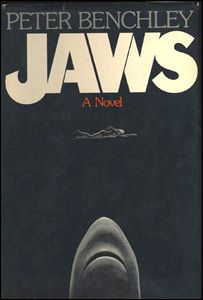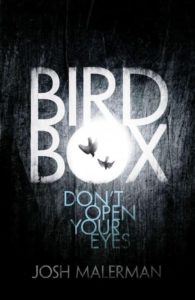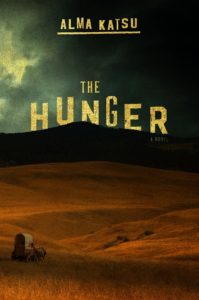Most popular articles for January 2024:
Starting a novel can be difficult, even for the most experienced of writers. Starting a horror or suspense novel can be even harder. There’s a lot that needs to happen within those first few pages and chapters. And readers have high expectations. Here are some things to consider as you start down the dark and twisty path…
How do you start a horror or suspense story? On the surface, this seems like a simple question that should have an equally simple answer. But it’s not that easy.
How to Start a Horror / Suspense Novel
The reality is that there are countless ways to start a horror novel — or any other work of fiction, for that matter — and each option has its own variations. The best way to begin a horror story will vary from one writer to the next, and from one project to the next. It’s a case-by-case situation.
It helps to answer a few questions before you begin:
- What kind of storyteller are you? What are your inclinations?
- What are some of your favorite novels, and how did the authors of those stories start them off?
- What kind of story do you want to tell?
- How do you plan to “hook” the reader with your first chapter, to propel them forward to the next chapter, and the next?
These questions are yours to answer. And they require a bit of soul searching, a bit of self-reflection. But I’m willing to bet you can answer them, if you open your mind and follow your instincts.
By the time you finish this article, you should have an easier time answering these questions. You’ll have a better sense of how and where to start your horror novel, to achieve the desired effect. And that’s a great place to be.
Related: 7 places to find horror novel ideas
Two Ways to Handle the Beginning
You have many options to choose from, when starting a story from scratch. Hundreds of options. But this is a blog post, not a book, and you have other things to do. So let’s simplify things.
Let’s take all of the possible horror and suspense novel starters, all of those versions and variations, and boil them down to a simple dichotomy.
From a structural standpoint, there are two basic ways to start a horror or suspense novel. And both have their pros and cons.
Structural options:
- You can reveal the threat in the first chapter, and then shift back to “everyday life” for a while.
- You can hide the threat until later in the book, but hint at it from the beginning in order to create tension.
Of course, there are other ways to start a horror story besides these. You could break these two options down into different variations. But let’s keep it simple for now. Let’s focus on the big-picture choice that needs to be made here: Do you want to start with a scare, or save it until later?
Option 1: Revealing the ‘Horror’ in the First Chapter
The first option is to begin your horror novel by showing readers the terrible thing that threatens the characters. Think of it as a preview of what’s to come.

In Peter Benchley’s Jaws, we get to “see” the great white shark at the beginning of the novel. It appears in the book’s very first sentence: “The great fish moved silently through the night water, propelled by short sweeps of its crescent tail.”
I won’t spoil the scene, for those who haven’t read the book and want to. Just know that the “horror” in this novel — a great white shark that prays on people — is revealed within the first few pages of the book.
This an effective way to begin a story, especially for writers who want to generate tension and suspense. Benchley started his horror novel in this fashion because he knew readers would be hooked from the beginning. (Pun intended.) They would “see” the terror from the get-go, see what it was capable of, and they would want more.
And it worked. The hardcover edition of Jaws stayed on the New York Times bestseller list for more than 40 weeks and sold millions of copies.
Side note: Great whites are amazing creatures that deserve our respect and protection. Peter Benchley was horrified by the anti-shark sentiments that arose in the wake of his novel, and he spent much of his life educating people about them.
It, by Stephen King, is another horror novel that starts with a bang. Within the first 15 pages or so, we have an up-close and terrifying encounter with Pennywise the clown. (“Do you like popcorn, Georgie?”) If Peter Benchley made readers afraid to go into the water, King made them afraid to wander too close to storm drains.
In these and other works, the authors have chosen to start their horror novels with a dose of terror. They’ve chosen to hook us from the start by revealing the threat.
Of course, we don’t see the full and terrible potential of that threat. Not yet. We only get a taste of it. And that’s intentional as well.
In Jaws, we see the power and lethality of the shark, but we don’t yet know it’s going to terrorize a small New England tourist town until later in the story. At the start of It, we witness a shocking event but don’t yet realize it’s part of something bigger, something recurring.

In the more recent Birdbox, by Josh Malerman, we realize from the first few pages of the story that something is seriously wrong in the world. We don’t see the horror, as we do in the two novels mentioned above. But we see the effects of it. We get a preview of what’s to come.
So that’s one way to start a horror or suspense novel. It’s the most exciting way to start things, for author and reader alike. It teases us. It gives us a small taste of terror, long before the real fireworks begin.
After this initial thrill, the author can shift gears and slow things down. She can take us to a place that’s relatively safe (compared to the horror we started with) and introduce the characters who populate the story. She can take her time.
And we’ll go along for the ride. We’ll stick with it, even if many chapters go by before the threat returns. We’ll follow along with a kind of background dread and expectation. We’re all-in.
At least, that’s how the author wants it to work.
There’s another benefit to starting your horror novel in this fashion. Suspense. By starting with a frightening or disturbing scene, you’re cranking up the suspense for everything that follows. This is especially true when the reader knows something the characters themselves don’t yet know.
Option 2: Making Readers Wait for the Scares
Another way to start a suspense or horror novel is to keep the threat hidden for a while, to make it a mystery.
This might make it more challenging to keep the reader turning pages, chapter after chapter. (Or not, depending on how you craft your story.) But the payoff could be worth it. The horror in your novel — the person, creature or force that endangers your characters — might be even more terrifying if people have to wait for it.
The “delayed horror” approach also gives readers a chance to connect with your protagonist and other main characters. In this scenario, you’re not hooking the reader with a terrifying scene at the start of your horror novel. You’re putting the initial spotlight on your characters and their lives. We find out whose story it is, who we should be rooting for, and we’re with that person from the very start.
If the writer creates compelling characters, the reader will be more concerned about them down the road when the horror enters the picture.

In Alma Katsu’s gripping 2018 novel The Hunger, we know things are going to turn dark at some point. Her story is based on true events, the Donner party, which did not end well.
Still, we don’t see the terror right away. Katsu brings us in gradually. We learn disturbing things piecemeal, as the characters themselves learn them. There is a kind of escalation in this novel that creates tension and keeps the reader turning pages.
Speaking of tension, that’s another important factor to keep in mind as you start writing your horror or suspense story. So let’s shift away from structure and talk about technique.
Related: How to start a zombie novel
Two Other Things to Keep in Mind
All novels can benefit from a healthy dose of tension and conflict. Without them, stories tend to fall flat. It’s even more important for writers of horror or suspense, because readers expect to encounter these things early in the story. That’s why they chose the book in the first place.
Your job, as the author, is to avoid letting them down.
For these reasons, it’s wise to introduce and develop your main character(s) at the start of your novel. Tales of suspense and terror work best when the reader can identify with a clear protagonist, and fear for that person.
Let’s look at these factors one at a time…
1. Create tension at the start of your story.
In fiction, tension and conflict create drama, and drama keeps the reader engaged in the story. It keeps them turning pages, straight through to the end.
Here’s a relevant quote from the NY Book Editors blog:
“Tension. It can spellbind your readers and leave them breathless, on the edge of their seats and biting their nails in anticipation for what will happen next. And, without it, your story will feel as lifeless and limp as a pricked balloon.”
Later, in that same article, the author writes:
“Ideally, you’ll want to start off with some tension but then tighten the tension as you get closer to the climax, or crisis point. Afterwards, you’ll naturally ease the tension because anticipation is no longer at play.”
In horror and suspense novels, much of this tension comes from conflict. And there are many different kinds of conflict.
- You have interpersonal conflict, where one character has problems with another character.
- You have internal conflict, where one character grapples with her own thoughts, fears or emotions.
- And then there’s that old chestnut: “character versus environment.” This is an outward struggle where your character battles some external force or element, whether it be bad weather or a zombie outbreak.
You don’t have to include all of these conflict types in your first chapter or prologue. You’d probably overwhelm readers if you did. But some type of tension should exist at the start of your horror novel.
Readers should be able to detect conflict (or the coming of conflict) within the first 10 or 15 pages. If they don’t — if you start and end your first chapter with everything being fine — you’ve given the reader little reason to continue reading. You haven’t “hooked” them. You haven’t gotten them emotionally invested in the story. These are things that need to happen early on in the book.
2. Give readers a main character to care about.
Your horror novel might contain a handful of characters, or dozens. That’s up to you. The reader has ample opportunity to meet all of these people, to get to know them. In most cases, however, it makes sense to introduce your protagonist or main character right away. Put that person front and center, when the curtain rises.
There are several reasons for doing this:
- You’re giving the reader someone to grab onto.
- You’re helping the reader become emotionally invested in the story.
- You’re humanizing the story.
When we read a good horror or suspense novel, we don’t just fear the terrible “thing” in the story. We fear what it will do to the characters. We fear for their wellbeing. This makes the story more human, and more enjoyable overall.
What Are Your Thoughts?
As a reader, what kind of components do you like to see at the start of a horror story? Is there a particular novel you remember to this day, because of the way it started? What pulls you into a story and keeps you turning pages?
I’d love to hear your thoughts on the subject. Feel free to leave a comment below.